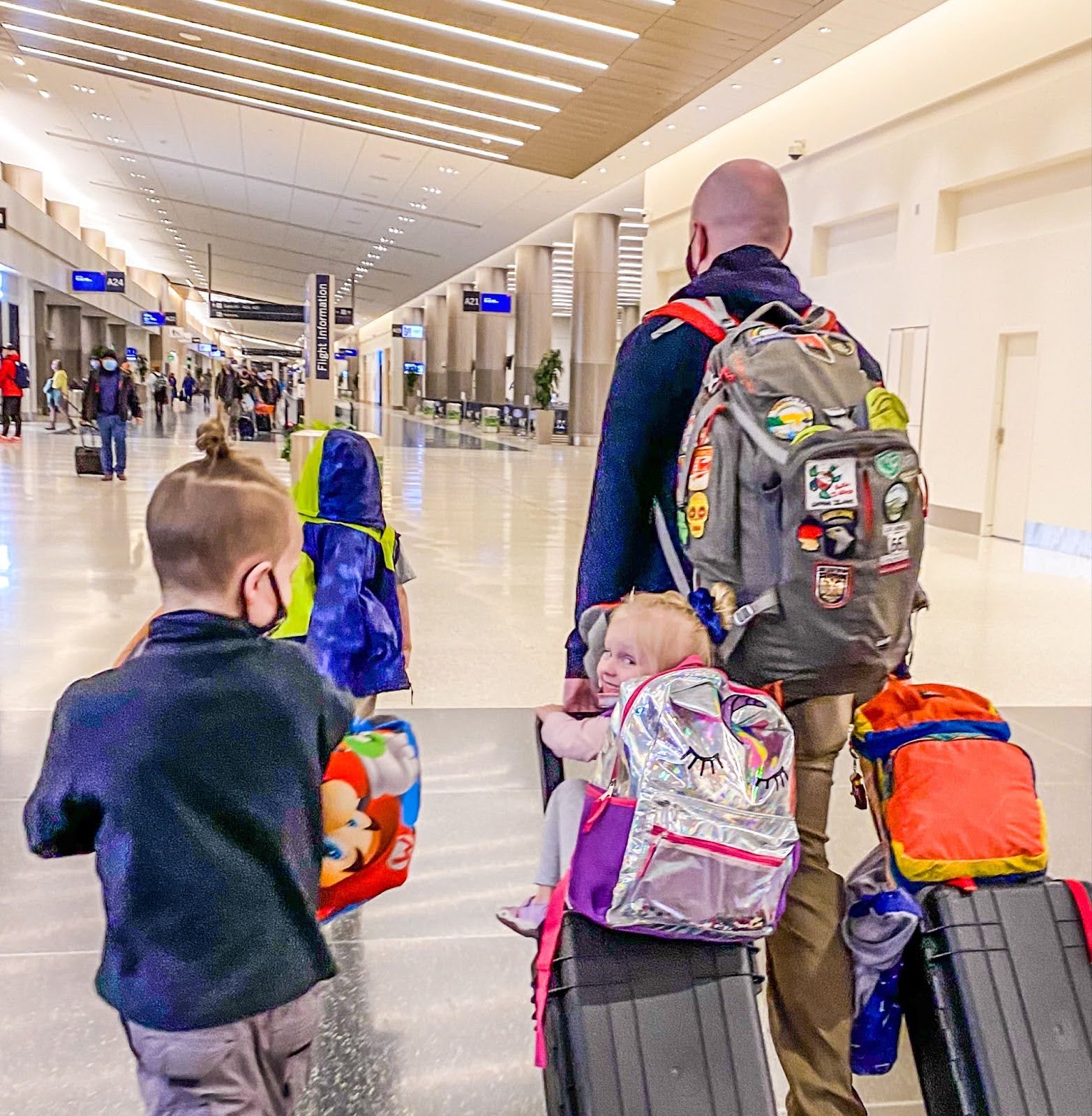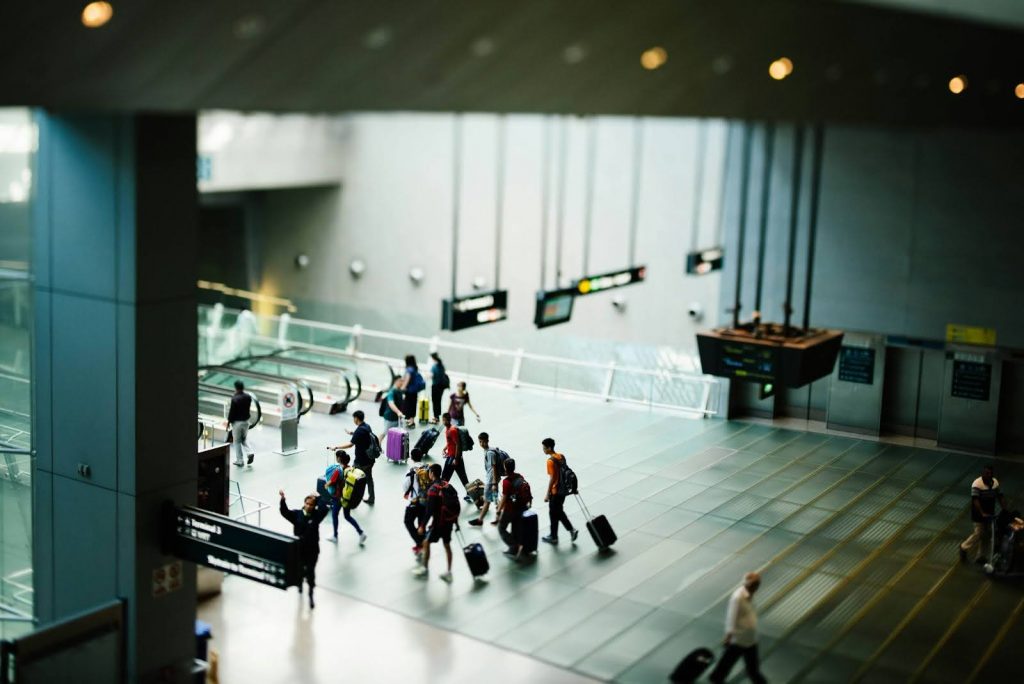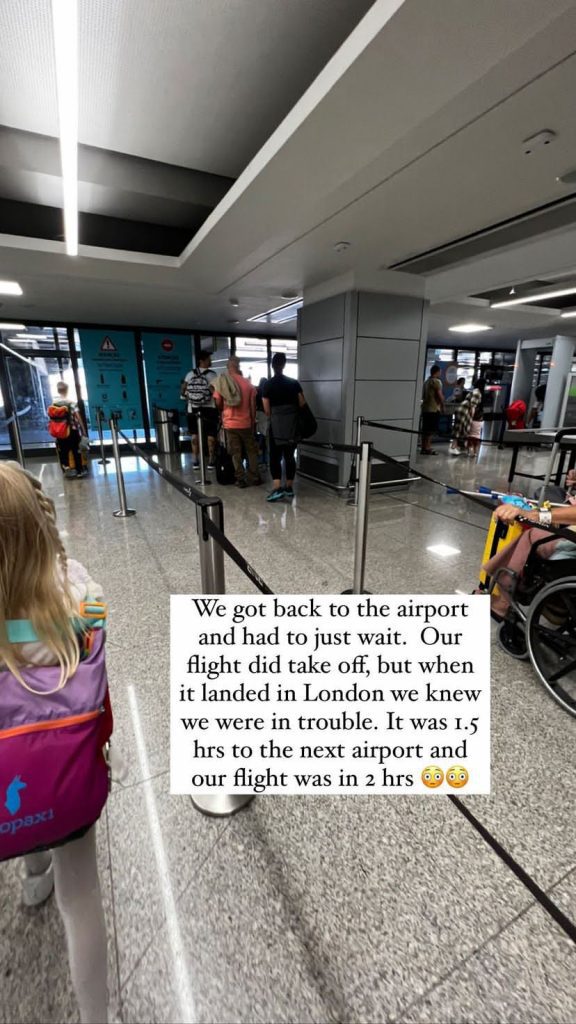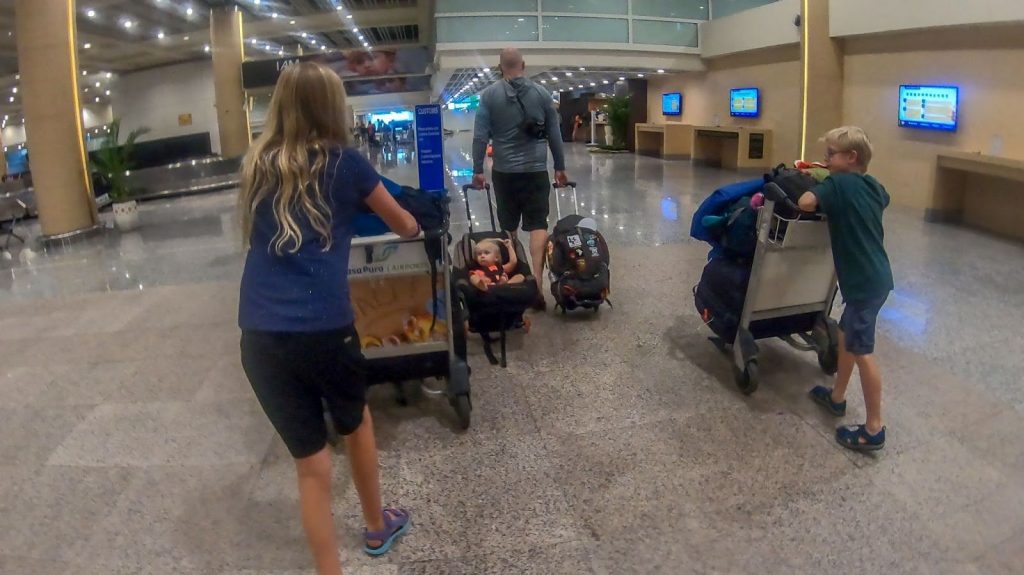

Remember that time we got stuck in the airport with cranky kids and a mountain of luggage? Remember that feeling when your airline announced that your flight actually isn’t going to be taking off for 2, 6, or maybe even 24 hours? Remember that awful feeling? Well, buckle up, because I’m about to share a travel tip that you should remember.
Picture this: Our family of seven, excited to visit the USA for spring break (with our Portuguese nanny in tow), suddenly hears that our flight is, in fact, not going to come. Cue the meltdowns (and not just from the kids). But here’s the kicker – nearly 1.5 years later, we received a nice chunk of change as compensation. Say what?
If you are facing a delay or cancellation in the EU, this guide explains European flight delay compensation rules and how to claim what you’re owed.
*Disclaimer: This post may contain affiliate links. Opinions shared are my own, and I only endorse products I support. By clicking on any of the links below, I may get a small commission if you purchase at absolutely no additional charge to you. I appreciate your support.*
Enter EC Regulation 261/2004 – the superhero of European air passenger rights. It’s a mouthful, I know, but stick with me. This nifty law protects passengers on flights within, to, or from the EU when things go sideways. We’re talking delays, cancellations, or getting bumped off an overbooked flight. The best part? You could be entitled to up to €600 per person!
We received slightly less than that, to be honest, but we got about $1400 back! This is after the company we used to help (more on that below) took their half. I’ll take it, especially because the delay is going to happen either way.
But wait, there’s more! While EC 261/2004 provides a solid foundation for compensation, savvy travelers have additional options to safeguard their trips, such as travel insurance and credit card protections.
Now, here’s a common question: Can you claim EU compensation if you’ve already been reimbursed through travel insurance?
The short answer is: Yes, you can!
EU compensation under EC 261/2004 is separate from any reimbursement you might receive from your travel insurance or credit card. The EU compensation is designed to compensate you for the inconvenience caused by the delay or cancellation, not just for out-of-pocket expenses.
Here’s the breakdown:
So, don’t hesitate to claim both. It’s not considered double-dipping because they serve different purposes. Just be sure to check the terms of your insurance policy, as some may have clauses about other compensation received.

Now, before you start planning your bonus Disney shopping spree, here’s the scoop:
1. Who’s covered?
Bonus: It applies to all passengers, regardless of nationality. USA! USA!
| Flight Itinerary | You’re flying an EU carrier | You’re flying a non-EU carrier |
| Flight from the EU to the EU | This flight is covered by EU261. | This flight is covered by EU261. |
| Flight from the EU to non-EU | This flight is covered by EU261. | This flight is covered by EU261. |
| Flight outside of the EU to the EU | This flight is covered by EU261. | This flight is not covered by EU261. |
| Flight outside of the EU to non-EU | This flight is not covered by EU261. | This flight is not covered by EU261. |
2. What’s covered?
3. The compensation breakdown:
And, there’s more! If you’re stuck at the airport, airlines may provide meals, refreshments, and even hotel accommodations for overnight delays. It’s like a forced mini-vacation (okay, maybe that’s stretching it). It comes down to the reason for the delay. A mechanical problem is the airline’s fault, and you are entitled to some reimbursements. A weather problem? Sometimes you are out of luck in the USA, but the EU law covers this as well under the above parameters.
Now, I know what you’re thinking – “Sounds great, but what’s the catch?” Well, airlines can wriggle out of paying if the disruption was caused by “extraordinary circumstances” like extreme weather or security risks. But don’t let that discourage you!
Pro tip from your favorite family travel guru: Always, always, always keep your boarding passes and any communication from the airline. These are your golden tickets to compensation land! It’s best to plan for delays (cue the extra diapers, wipes, and snacks here) and be pleasantly surprised if all goes off without a hitch!

Like insurance, airlines don’t want to pay out for anything. They want to make it as hard for you as possible, blame everyone else, etc. This process takes some grit! However, for us, seven tickets usually makes it worth the hassle. Be sure to document all you can in notes, emails, what was said, etc. so you can share these details later. And keep ALL receipts!


If you’re flying to or from an EU airport (including Iceland, Norway, and Switzerland), or even within the EU, you could be eligible for compensation. This includes flights operated by EU airlines from outside the EU. However, if you were informed of a cancellation 14 days in advance, or were offered a reroute that gets you to your destination with minimal delays, compensation might not apply.
Here’s where it gets interesting—depending on your flight distance, you could be eligible for compensation ranging from EUR 250 (about USD 270) to EUR 600 (about USD 649).
For flights under 1,500 km, it’s EUR 250. Flights within the EU under 1,500 km could get you EUR 400 (around USD 433), and for longer flights in or out of the EU over 3,500 km, compensation can go up to EUR 600.
While navigating these rules might seem a bit daunting, knowing your rights can save you some euros and add a bit of excitement to your travel story. So, if you ever find yourself facing a delay, don’t just settle in, look for companies that can help you out in this battle.
File that claim, pronto! First things first, don’t wait until you’re unpacking souvenirs to file your claim. While you generally have up to three years (varies by country), it’s best to strike while the iron is hot – or while the kids still remember which toy they wanted from the airport gift shop!
You’ve got options:
a) DIY Route: Contact the airline directly. Most have online forms these days (thank goodness, right?). They may not make it easy to find, but you can find it.
b) Helper Apps: Check out AirHelp or similar services. They’re like your personal concierge to getting compensation. This was the route we took for our first canceled flight out of the EU and the one I’ll use in the future as well. I’m not the kind of person who is good at haggling with insurance companies.. I tend to let the money go and move on with my life. If that also sounds like you, it’s worth it to let Airhelp or someone else get part of the profits so you get something.
Pro Tip: AirHelp has a nifty “No Win, No Fee” policy. If they don’t get you compensation, you don’t pay a dime. It’s like having a lawyer in your pocket, but way less awkward!
Gather your travel treasure trove – it’s time to channel your inner detective! Here’s what you’ll need:
Now, the waiting game. Take deep breaths. Processing times can vary wildly, from a few weeks to several months. We waited more than a year. Thankfully, Airhelp kept us up-to-date with regular emails every month or so.
Average processing time: 2-3 months. But remember, patience is a virtue (or so I keep telling my kids).
Here are some tips for dealing with airline responses (aka, the art of polite persistence). Airlines might play hard to get. Here’s how to keep your cool:

If you’re used to flying in the EU, you might be in for a surprise when dealing with flight issues in the United States. Let’s break down the key differences:
In essence, while the EU system is designed to provide strong passenger protections and standardized compensation, the US system gives airlines more flexibility and generally results in less compensation for passengers. If you’re flying in or to the US, it’s crucial to check your airline’s specific policies and consider travel insurance for added protection.
Remember, friends, claiming compensation isn’t just about the money (though let’s be honest, it helps). It’s about standing up for your rights as a passenger. Plus, it’s a great lesson in persistence.
Next time you’re stuck in an airport, watching your perfectly planned itinerary crumble, remember – there might be a silver lining. And who knows? That compensation might just fund your next family adventure.
Happy travels, and may your journeys be filled with more magic than delays!
Leslie,
P.S. Don’t forget to check out my previous post on types of travel insurances, and which is best for you. Trust me, it’s a lifesaver!

Travel With Kids: Expert Tips For A Smooth European Family Vacation
How to Choose the Best Travel Insurance for Your Family
Hot Tips for Buying International Flights for Your Family: 250+ Flights Later
